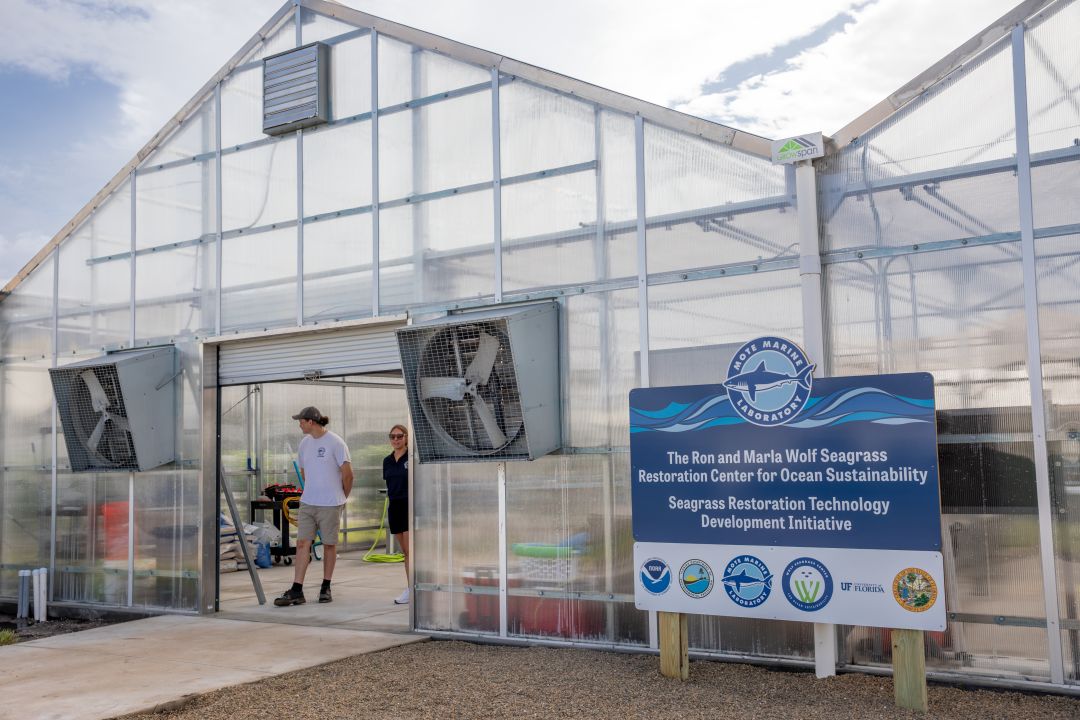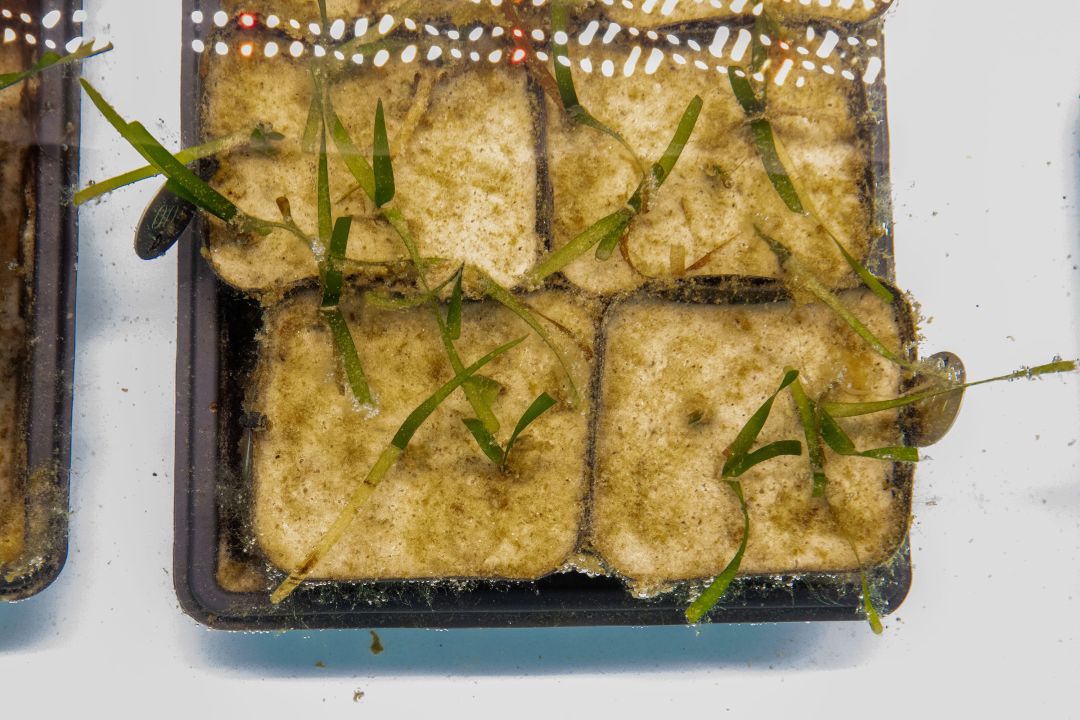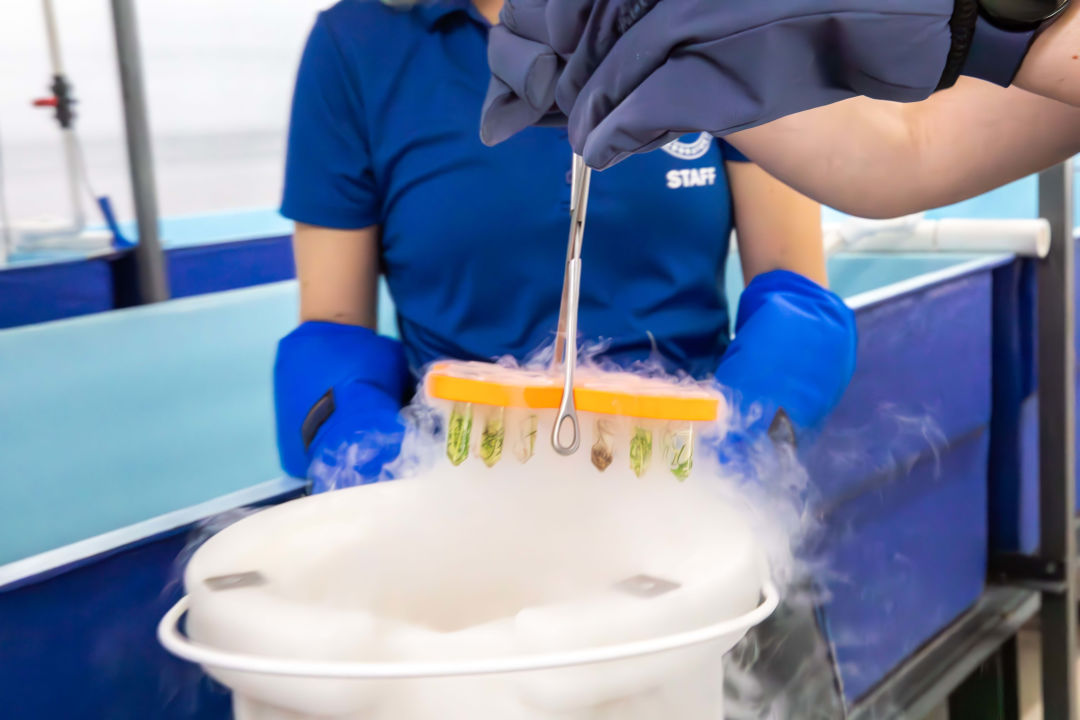Mote Expands Seagrass Restoration Efforts With Three New Research Facilities

Image: Courtesy Photo
At its Aquaculture Resarch Park in Sarasota on Monday, Mote Marine Laboratory & Aquarium hosted a ribbon cutting to celebrate the opening of its three new state-of-the-art research facilities designed to advance the restoration, resilience and long-term sustainability of Florida’s seagrass ecosystems.
The new facilities—the Ron and Marla Wolf Seagrass Restoration Center for Ocean Sustainability Greenhouse Facility, Biogeochemical Carbon Sequestration Lab, and Publix Seagrass Genetics Research Hub—fall under the umbrella Mote’s Seagrass Ecosystem Restoration Research Compound (SERRC), which is headquartered at the Aquaculture Research Park.

Image: Courtesy Photo

Image: Courtesy Photo
In 2023, the state of Florida established the Seagrass Restoration Technology Development Initiative, allowing a cohort of public and private research entities to develop methodology and technology to address the loss of seagrass and the ecological and economic impacts of that loss to communities across Florida.
Seagrasses serve as the foundation for thriving marine ecosystems and coastal communities, provide nursery habitats for fish and food for marine mammals like manatees, improve water quality, prevent erosion and capture carbon.
However, Florida’s seagrass meadows are vanishing at alarming rates due to dredging, runoff, reduced water clarity and climate-related impacts.

Image: Courtesy Photo

Image: Courtesy Photo
Mote’s Seagrass Ecosystem Restoration Research Program is led by Mote postdoctoral research fellow Dominique Gallery and takes a multifaceted, science-based approach to seagrass restoration, and each SERCC building was designed to approach seagrass research and restoration in different ways.
The Ron and Marla Wolf Seagrass Restoration Center for Ocean Sustainability Greenhouse Facility provides a controlled environment for testing the effects of stressors such as salinity, temperature, turbidity and grazing on seagrasses. The results help researchers identify and propagate seagrasses that are most likely to survive in changing environments.
The Biogeochemical Carbon Sequestration Lab is focused on seagrass and marine sediment research and its role in carbon sequestration—the process of capturing carbon dioxide and storing it for long periods of time to prevent it from contributing to global warming. Scientists at this lab plan to develop data-driven solutions that link seagrass restoration to carbon capture, creating long-term carbon storage strategies that benefit seagrass ecosystem restoration.
At the Publix Seagrass Genetics Research Hub—the first international seagrass genetics library—Mote’s Dr. Gallery will identify genetically resilient seagrass populations to use in restoration. Scientists will also map, catalog and propagate types of seagrass that are more likely to thrive under increasing environmental stressors.

Mote has also entered into a formal partnership with the Florida Department of Environmental Protection to establish a new research and restoration site at Bahia Honda State Park in the Florida Keys. There, Mote will construct and operate a land-based seagrass ecosystem nursery while supporting Bahia Honda State Park's education and outreach efforts. The partnership's goal is to enhance marine restoration efforts, park visitor experience and public engagement at one of the state's most ecologically significant coastal environments.
To learn more about Mote’s Seagrass Restoration Technology Development Initiative, visit: mote.org/seagrass.



